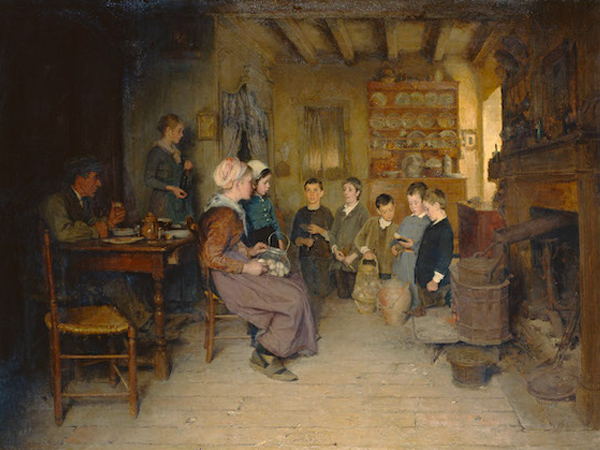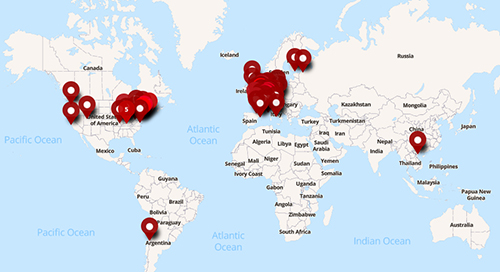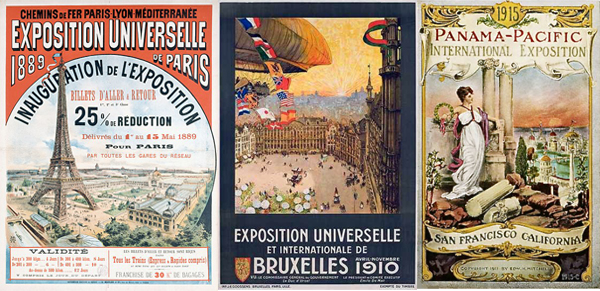LEON DELACHAUX’S INTERNATIONAL EXHIBITIONS: AMERICA, EUROPE, ASIA
« Art can be made great anywhere, it is not the place, it is the man »
Letter to Carol Storck, July 30, 1881
April 2021: At the time of writing, art museums and events have become inaccessible. Somewhat frustrated to be unable to visit or travel, the Endowment Fund’s art historians have chartered the course of the artist’s works, taking us around the world with them, and giving us a broader insight into the commercial and artistic routes of a man who took pride in his work and exhibiting it.
Conceived and developed by Corisande Evesque, one of the Fund’s art historians, the interactive map of Delachaux’s exhibition history is updated as new findings are made. Illustrating the status of our research on this subject, it shines new light on the life and work of the artist and enables us to view Delachaux’s commitment to international salons, galleries and curators. From 1879 to 1918, he developed an impressive national and international network, taking part in more than 200 exhibitions worldwide.
We invite you to follow in his footsteps.
Delachaux was twenty-six when, as a visitor to the influential Philadelphia Centennial International Exhibition of 1876, he discovered his passion for painting. It was there that he first encountered the Barbizon School of painters, Bartholdi’s torch for the future Statue of Liberty or Jules Dalou’s Brodeuse.
His exhibiting career lasted almost forty years, from 1879 in Philadelphia – date of his first known exhibition – until 1918 in Paris, shortly before his death. From the start of his career in North America we witness the lively and colorful bourgeois interiors and portraits of Black Americans. Once back in France, he adapts his style to the simplicity of peasant life, employing subtle and delicate tones. Throughout his career, he also proved to be an excellent portraitist.
Delachaux obtained his U.S. citizenship in 1883 and began his exhibition career listed as an American national. Exhibiting yearly at the Salon des Artistes Français and then at the Salon de la Société Nationale des Beaux-Arts, he also partook in the World Fairs of Paris (1889 and 1900), Chicago (1893), Saint-Louis (1904), Brussels (1910), Ghent (1913) and San Francisco (1915).
His work crisscrossed France thanks to the dynamic momentum of the Sociétés des Amis des Arts. He also gained exposure elsewhere in Europe, through exhibits featuring French and international artists. From 1886 to 1903, he exhibited in group and traveling exhibitions organized by the Société Suisse des Beaux-Arts, commonly known as Turnus. We note his presence at exhibitions run by Société des Amis des Arts of Neuchâtel and La Chaux-de-Fonds – his family birthplace – as well as the Exposition nationale des Beaux-Arts in Bern and the Exposition municipale des Beaux-Arts in Geneva. In Switzerland alone, Delachaux took part in close to 50 shows, second in number only to France.

« Le Crux Ave à Pâques », 1887, oil on canvas, Kunsthaus Zürich (Switzerland).
Exhibitions: 1887, Paris, Salon des Artistes Français – 1888, New York, Prize Fund Exhibition
1888, Philadelphia, PAFA 58th annual exhibition – 1889, Zurich, Schaffhausen and Basel, Turnus
© 2016, Kunsthaus Zürich (Suisse)
In 1902 his work was sent to Asia, where it was shown in Hanoi in an exhibit to commemorate the new capital of French Indochina. His art traveled all the way to South America in 1910, where his Costurera was shown at the Exposición Internacional de Bellas Artes in Santiago de Chile, and where it still remains today.
Even though Delachaux achieved true recognition in his time, he, like many talented naturalist painters, has been forgotten over the last century. His success can be measured by the sheer number of exhibitions in which he took part, the works acquired by the French government during his lifetime and those present in public collections worldwide, yet his work still remains under-recognized today.


 English
English  Español
Español  Français
Français